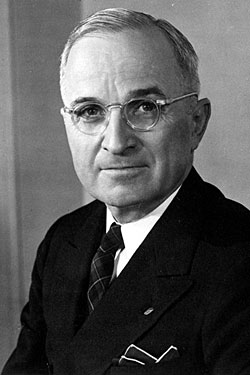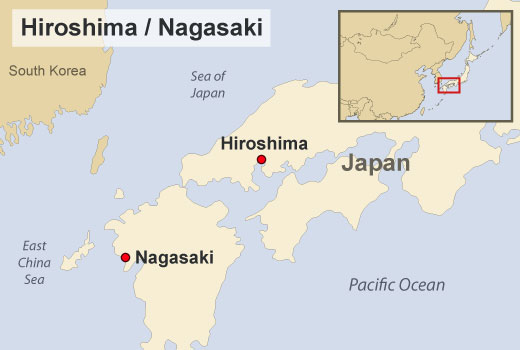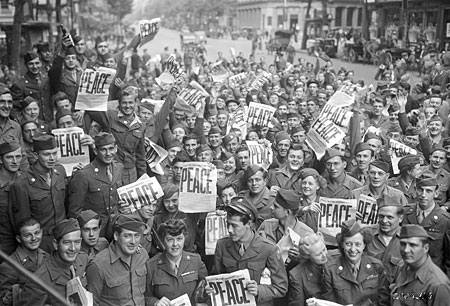Dropping the First Atomic Bomb
The decision to use this new weapon became more significant in 1945, when a committee of scientists, government officials, and military leaders formed to discuss options regarding the invasion of Japan. Military leaders and government officials opted for the bomb, but the scientists were not so eager to explore its use.

Harry S. Truman
The decision was left to the new President of the United States, Harry S. Truman, who took over after the death of President Roosevelt in 1945. On August 6, 1945, an American B-29 bomber named Enola Gay flew over Hiroshima, a city in southern Japan, and dropped the first atomic bomb in combat. A second bomb was dropped on August 9 on the city of Nagasaki after the Japanese government refused to surrender.

Photo of the Enola Gay and pilot

Enola Gay
On August 15, Americans celebrated Victory in Japan Day (V-J Day) when the Japanese finally surrendered without condition. The war was officially over, but with the dropping of the atomic bomb, a new precedent had been set.

Map and location of Hiroshima and Nagasaki, Japan

Celebration of the Japanese surrender